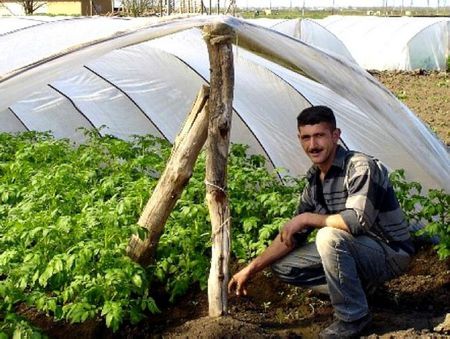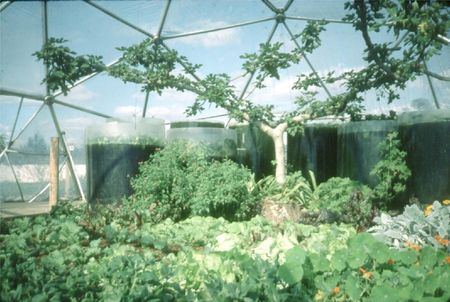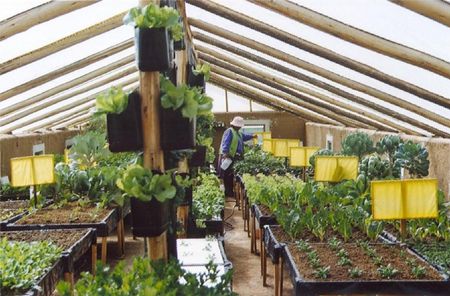Greenhouse Cultivation of Staple Crops
Introduction
The world's four top staple foods by production are: 1.) maize (corn), 2.) rice, 3.) wheat and 4.) potatoes. These “calorie crops” are typically grown in the open field and not in greenhouses. Still, successful greenhouse production has been demonstrated for all of these crops. Special strains and cultivation methods may be required for this to work - see below. The production of corn and potatoes may be more appealing than that of rice and wheat, given the already much higher yield in the open field: corn 25.9 tons per hectare (USA, 2012) and potatoes 45.4 tons per hectare (Netherlands, 2012).
Cost considerations
One of the main reasons that open field cultivation is the general rule for rice, potatoes, wheat and corn is the high cost of constructing a greenhouse as well as low transportation cost for the products. This equation may change with lower-cost greenhouses, a rise in transportation costs or an increase in global tariffs (e.g. due to reversal of free trade agreements). Farmland is getting more scarce and expensive due to population expansion and land degradation, which could also affect these calculations. Some countries and communities are willing to pay extra in order to have more control over and access to their own food production (resilience over efficiency).
Other considerations
Besides cost, there are other potential problems with the greenhouse cultivation of these crops (e.g. related to pests, humidity, soil moisture, other soil conditions, nutrient management, pollination, etc.). However, these can likely be worked out, given the right strains and growing conditions. The potential productivity gains are substantial: a major (at least) 3-4 fold increase in land productivity, perhaps even as much as a 20-fold increase in some situations, is possible.
CO2 enrichment
The enclosed nature of the greenhouse allows for the possibility of CO2 enrichment. While the average ambient CO2 concentration in the atmosphere has recently surpassed 400 ppm, in a greenhouse it can be elevated to over 1000-1200 or even up to 1500ppm before dangerous toxic effects on the crops and workers are likely to occur. This enrichment has dramatic positive effects on crop productivity (doubling or tripling) and potential advantages in water use (due to changes in plant transpiration with lower water losses). Various sources of CO2 for the greenhouse are available, such as burning biogas or compost which provide very clean sources of CO2. Some pyrolysis methods (for biochar production) are so clean that they could even be considered for this also, if very large amounts of heat are needed.
Heating
Greenhouses can also be heated, allowing for year-round cultivation in cold climates. More technologically advanced greenhouses could provide better insulation and hence have lower heat losses, but come at a higher cost. Given that large amounts of low-grade waste heat are available from biomass, perhaps the better solution is a greenhouse that is lower on the technology scale.
Independence of weather
To some degree, greenhouses allow for weather-independent work. Damage to crops from wind, hail, frost and rain are much less of a concern. Growing conditions can be controlled better. At the same time, working conditions are improved (e.g. avoidance of rain or extremes of temperature), allowing for more predictability of the operation and hence efficiency.
Conclusions
This is high density agriculture, which seems appropriate for the 21st century. High density in turn reduces transportation requirements for things like fertilizer and harvested product, when all are used locally. High density has cost benefits for the initial set-up of the farm: higher productivity on less land.
Related items
- earth sheltered greenhouse ("Walipini" concept)
- low cost wood construction
- Tefzel (ETFE) for durability, UV resistance, strength
- double foil for better thermal insulation
- heating with waste heat from higher-heat processes (biochar production, brick firing, tile firing, calcination, metal reduction, glass works, etc.)
Links
(to follow at some point)


